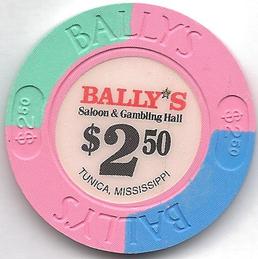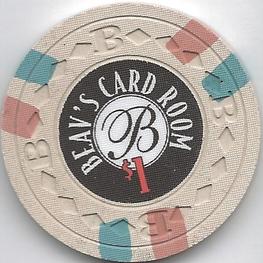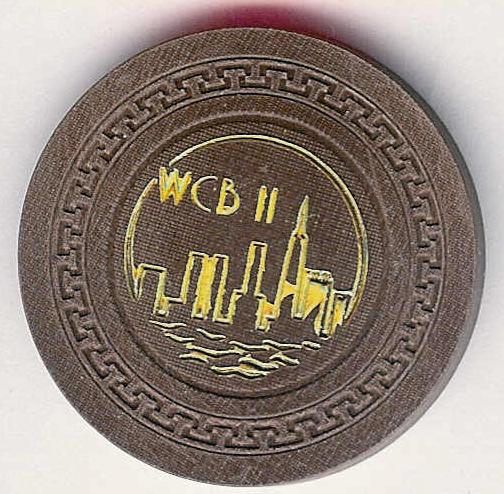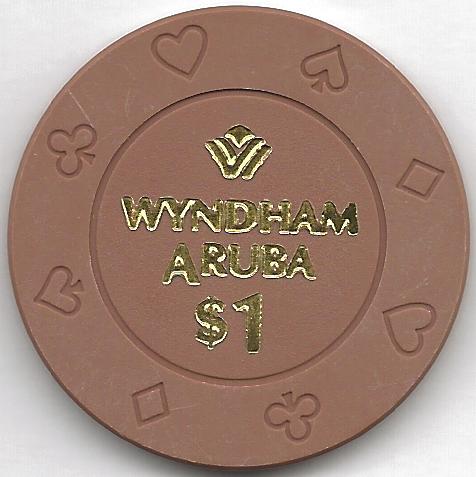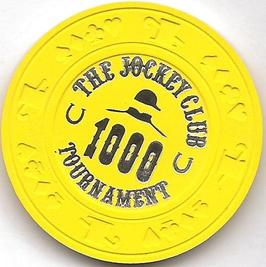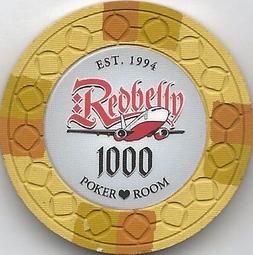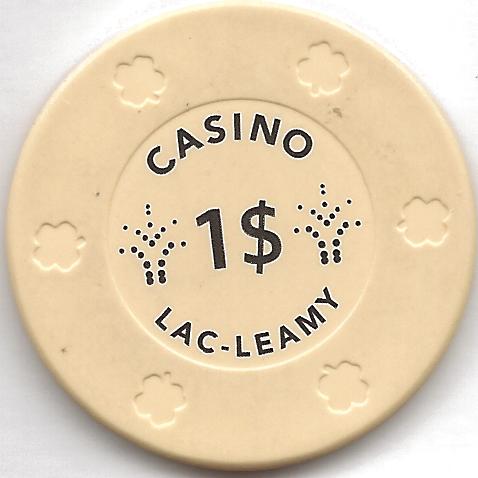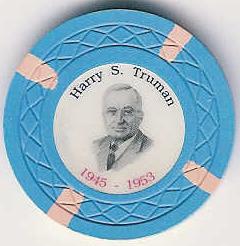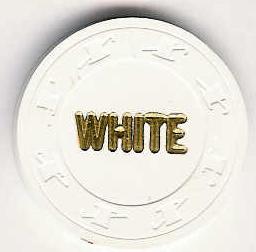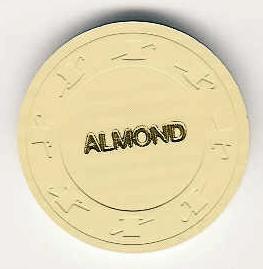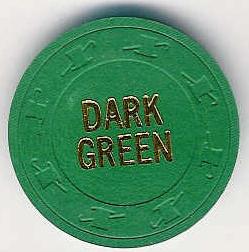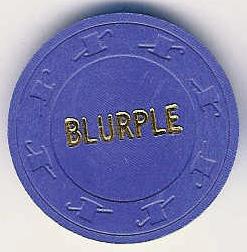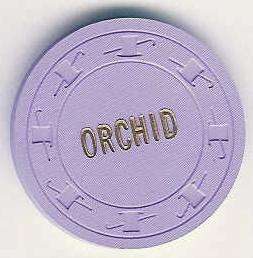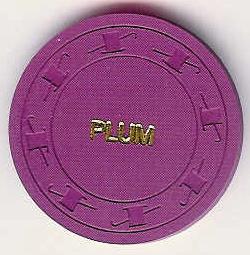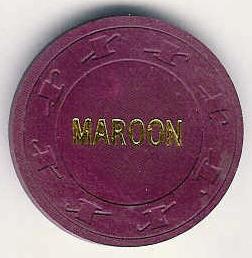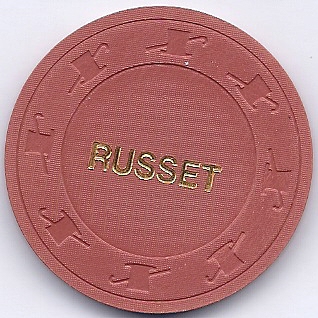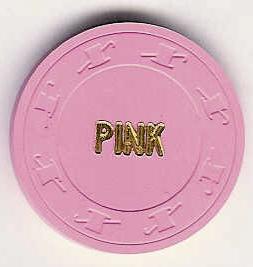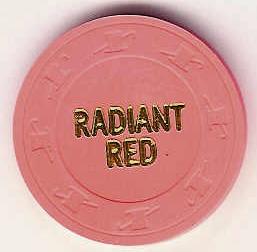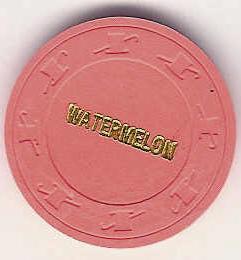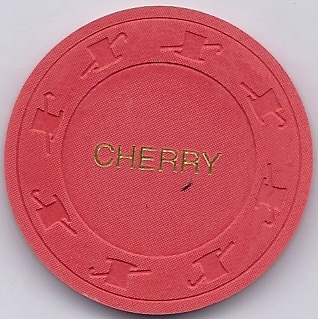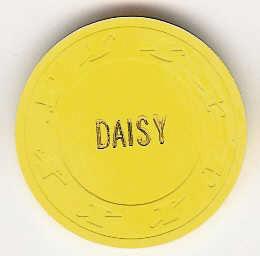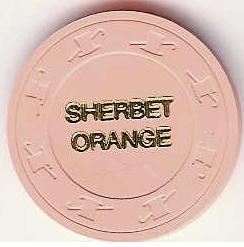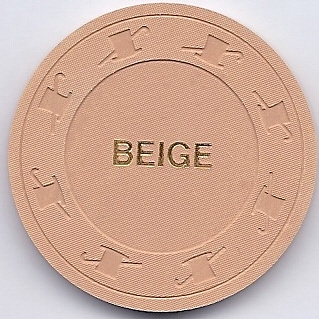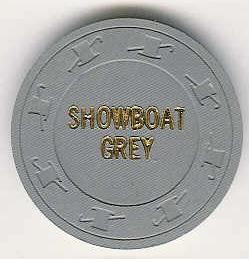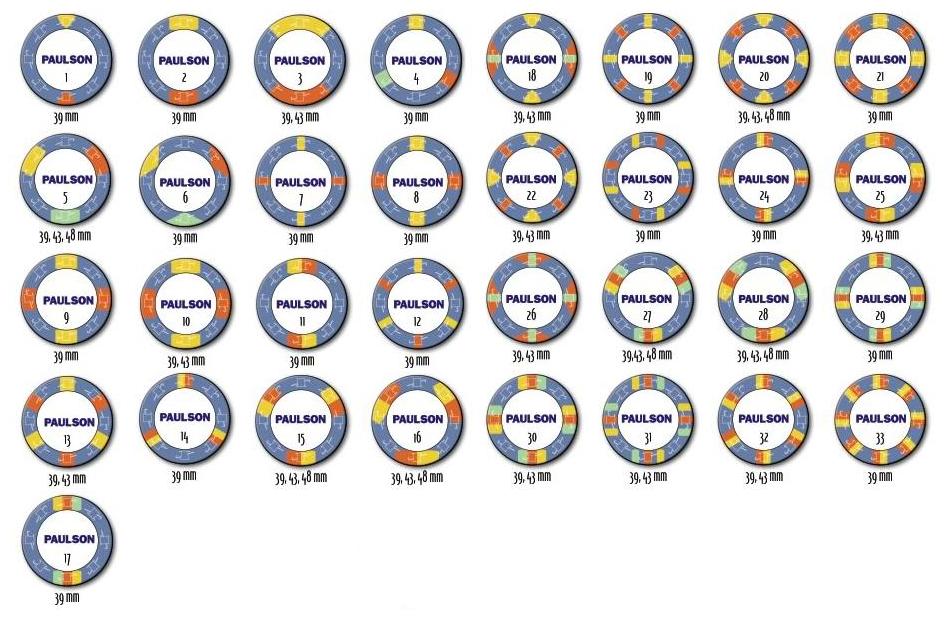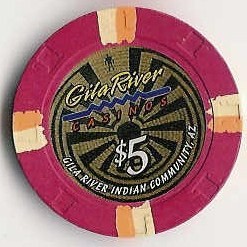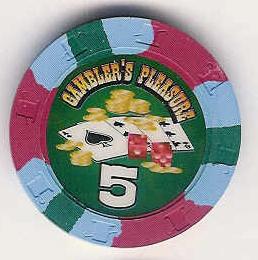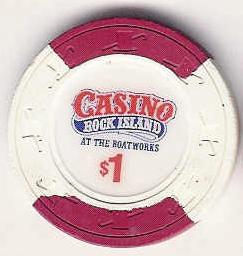All You Want to Know About Chips: Materials, Molds, Colors, Edge Spots, Inlays
Materials:
Chips are most commonly made of clay composite, ceramic, or plastic (sometimes with a metal insert/slug to add weight)
Molds:
The mold of the chip is the design pressed on the face of clay composite chips. On Ceramic or Plastic chips, sometimes manufacturers print designs to mimic a mold impression. Mold design is unique to each manufacturer. Some manufacturers allow casinos to design a unique "house" mold for an added level of security against counterfeit. Here are some examples of different molds from my collection. The most complete information about poker chip molds can be found at Robert Eisenstadt's Antique Gambling Chips and Gambling Memorabilia Web Site. http://www.antiquegamblingchips.com/molddesignindex_site.htm
Horseshoe Mold (MD-82)
Clubs Mold
Colors:
Each manufacturer offers a palette of colors. The colors are selected for the body of the chip and the spots of a chip to make the chip unique. The color of different denominations (cash values) of casino chips usually follow an established pattern of standard colors (i.e. white or blue for $1 chips, red for $5 chips, green for $25 chips, black for $100 chips and purple for $500 chips). These standards are sometimes set by gaming laws in the jurisdiction of the casino. This kind of standardization is practical because it allows for more efficient games. With standard colors, a gambler will be able to recognize that a red chip is worth $5 and a black chip is worth $100 without having to refer to the denomination on the chip, and it will speed up the game and reduce confusion or mistakes. Even with the normal standard color, there are plenty of variations in chips, because there are many different hues in the standard colors. Also, the colors in the edge spots and the inlay further differentiate the chip. The picture below illustrates the color palette offered by one manufacturer.
Here are actual manufacturer sample chips:
Edge Spots:
Edge spots are designed to help casino dealers and players look at a stack of chips from the side and be able to distinguish both the denomination of the chip, as well as count how many chips are in the stack. There is a wide variation of chip spot design. The colors used in the edge spots can be any of the colors in the manufacturer's palette.
Here are examples of all of the Edge Spots illustrated above:
Inlays, Inlay Diameter, Chip Diameter
The diameter of a standard chip is 39 millimeters. As you can see from the following diagram, there are different sizes for casino chips and the inlay on the center of the chip can be different sizes as well.
Different sized inlays on a 39 millimeter chip:
Different sized inlays on 43 millimeter chips:
www.PokerChipForum.com - A Source for Chip Collectors
Chiptalk.net is the internet's resource of its kind for poker chip enthusiasts. If you interested in poker chips sets, PokerChipForum.com has a wealth of information. If you are looking for chips, visit PCF!.







